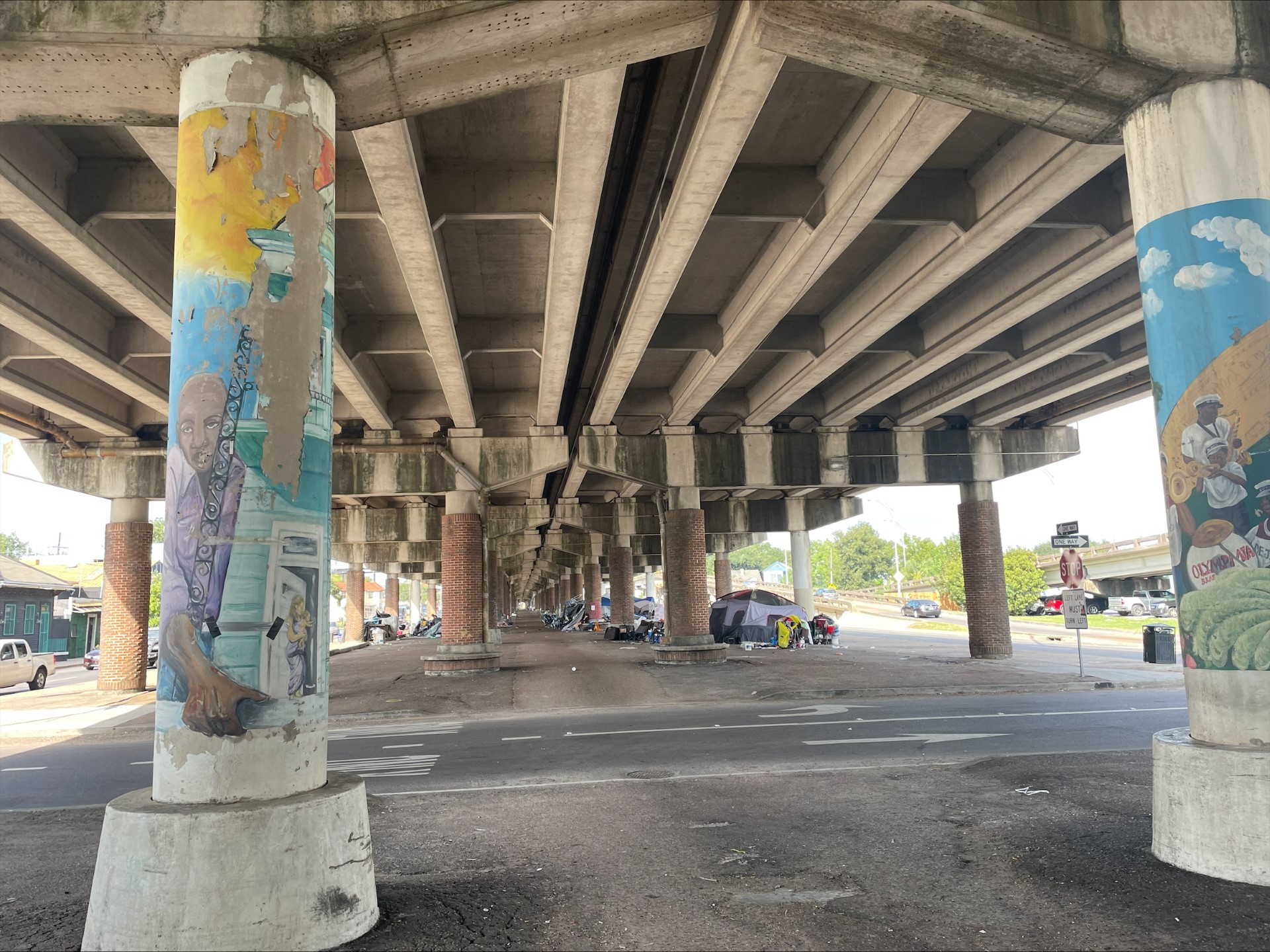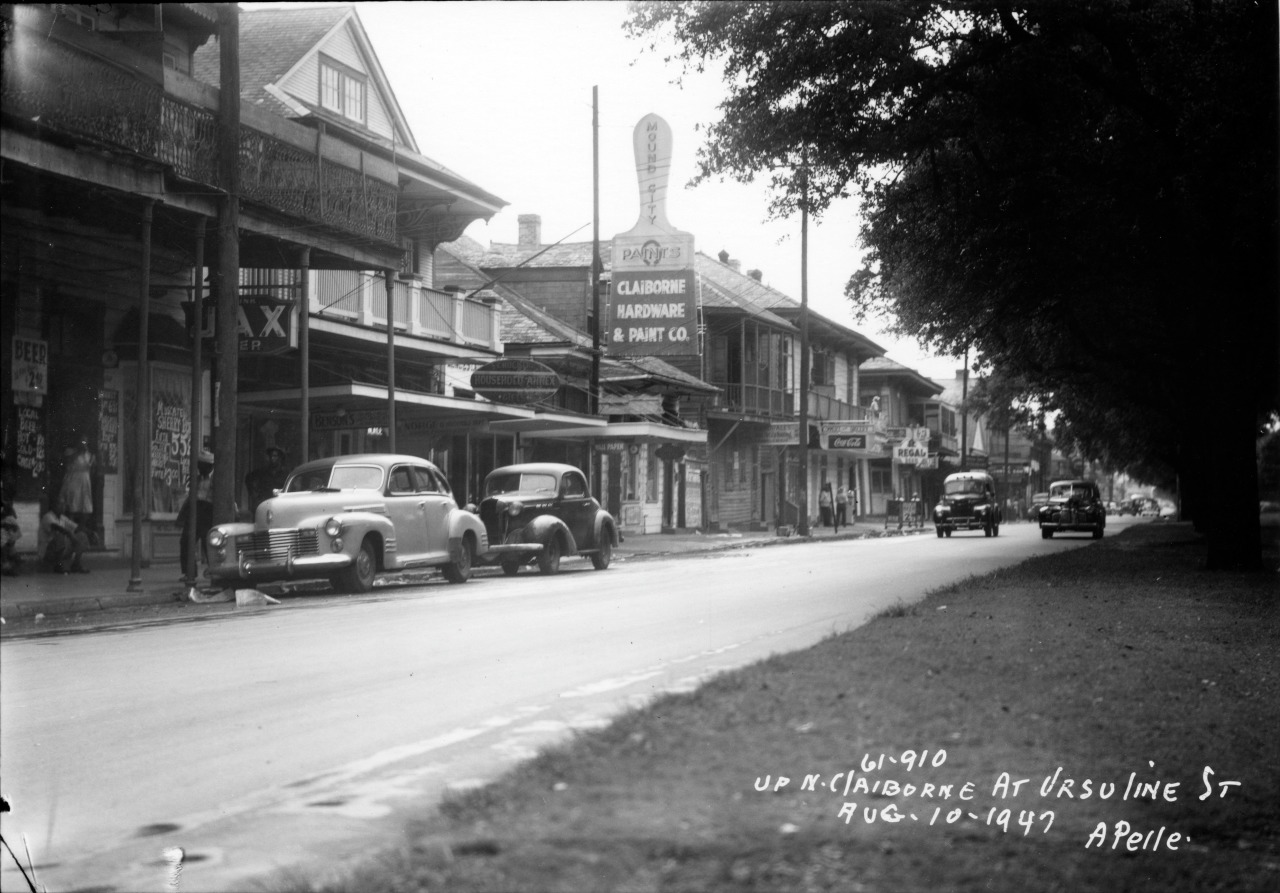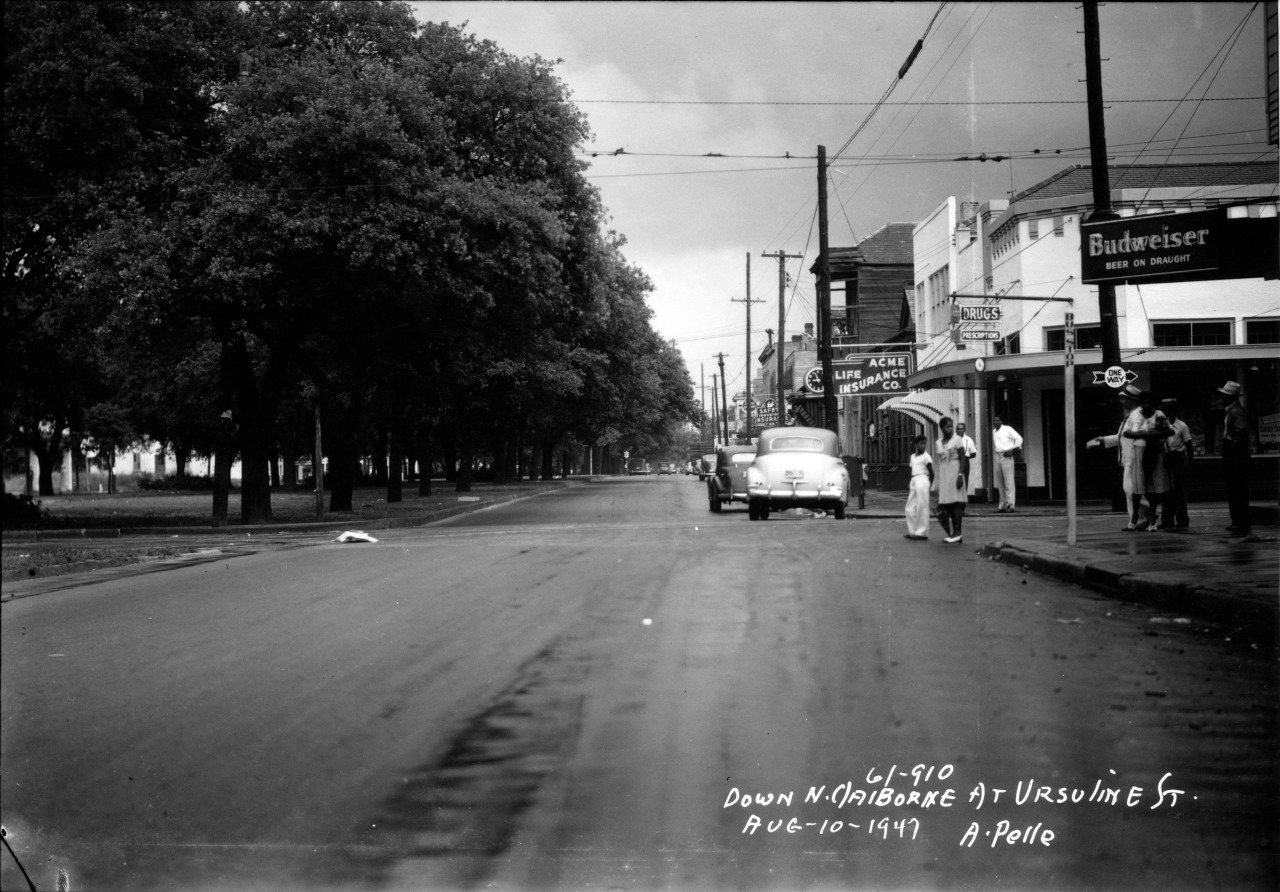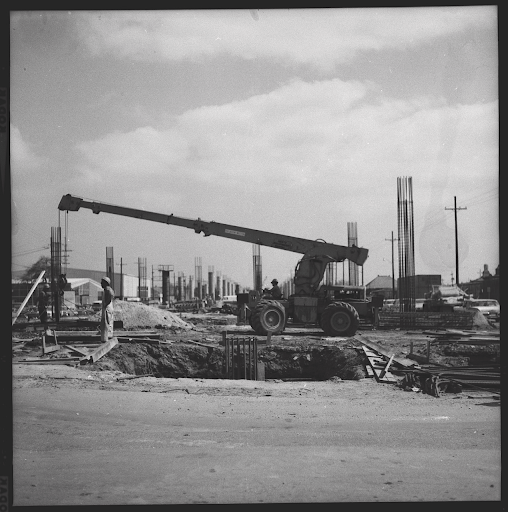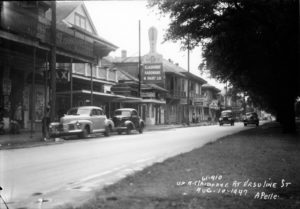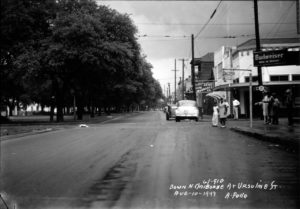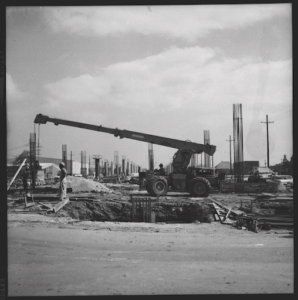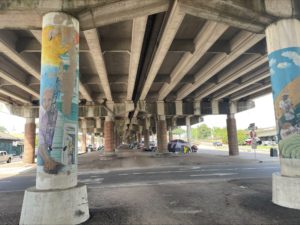Louis Charbonnet III leaned across his desk one afternoon and faced the road he despises.
He pointed out the window, past the fences he constructed to keep out intruders and to the roaring Claiborne Expressway.
“That,” Charbonnet said, “was a devastation to the Black community.”
Anyone who ventures into downtown New Orleans usually reaches the overpass, an elevated part of Interstate 10 that runs above North Claiborne Avenue. But beneath it, the city’s realities endure: homeless encampments. Drug dealers. Prostitutes. The overpass is so hated it has gained the nickname “The Monster.”
But more than anything, the neighbors in its shadows hate the Claiborne overpass because it cuts through the heart and soul of New Orleans: Treme.
Charbonnet considers himself lucky. His funeral home business, Charbonnet Family Services, was one of the few that survived the overpass’ construction.
Charbonnet said the expressway was initially good for his generationally-owned business, which has served the Treme since 1883. It allowed him to buy up excess property and expand his business.
Now, the overpass is destroying it. “I’ve been fighting hard to stay,” he said, “It’s still not attractive for people to come here.”
Treme’s history
“From the early existence of Treme, when Claude Treme started selling lots around 1810, a significant population of free people of color began to buy lots in that particular area,” said historian and Treme resident Raynard Sanders. Widely acknowledged as the oldest Black neighborhood in the country, Treme became a thriving commercial hub during the Antebellum period. Due to segregation in surrounding areas of the city, this 22-block area, situated between Elysian Fields Avenue and Canal Street was home to over 120 Black-owned businesses.
Those businesses comprised “just about everything the community needed” according to Sanders, including pharmacies, insurance companies, doctor’s offices, coffee shops and grocery stores. Many of these ran along North Claiborne Avenue, whose concrete median ground today was once a lush neutral ground, home to over 400 oak trees and a place for residents to picnic and celebrate Black Mardi Gras.
Throughout the 19th and 20th centuries, commercial success and community stability gave rise to flourishing culture and activism. Benevolent societies like Economy Hall organized trips to Washington D.C. to meet with President Abraham Lincoln and Frederick Douglass, and the citizen’s committee that arranged Plessy v. Ferguson resided in Treme. Congo Square, where enslaved African Americans would sing and dance on Sundays, sits around the corner, providing the roots for America’s original art form that would refine itself in the same area.
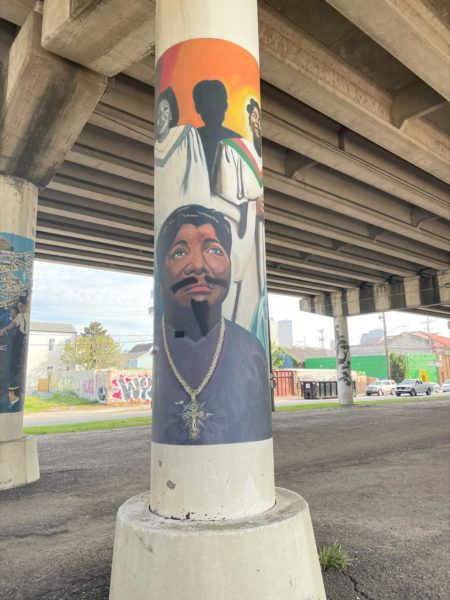
“All of the early jazz musicians lived and performed in and around North Claiborne Avenue,” Sanders said. “It was a 24-hour street, easily seven nights a week there were five or six live bands playing up and down Claiborne Avenue,” he added, and later in the ‘40s and ‘50s, Professor Longhair would play in these nightclubs, pioneering another new form of music: rhythm and blues.
As the 20th century progressed and automobiles became pervasive, there was a need to create infrastructure on par with America’s rapidly growing suburbs. According to Georgetown University historian Greg Beaman, controversial urban planner Robert Moses helped design two plans in 1946 to revitalize New Orleans’s interstate system — one in the French Quarter and one in Treme. After a massive effort to overturn state and national proposals for the French Quarter Riverfront Expressway, dubbed “The Second Battle of New Orleans,” the Department of Transportation canceled the project in 1969.
But plans for an interstate in Treme continued. The initial idea was to widen Claiborne from four to six lanes but evolved in 1957 to constructing an overpass. According to Beaman, the government started buying up property in 1964 and in 1969 construction was completed.
“A common conception is that after the French Quarter riverfront expressway was defeated, then they moved that plan back to Claiborne,” Beaman said. “But Claiborne had always been part of the plan.”
The difference in outcomes reflected the broader political and social dynamics of the time.
“Why didn’t anyone step in and try to save Claiborne Avenue?” Beaman said. “I think one of the main answers is that African Americans were excluded from the political process.
While wealthy whites lobbied Washington, Treme residents were not even notified of the project until it was too late. There’s scant evidence suggesting media outlets covered the plans at all, according to Beaman.
“It destroyed really the African American town square,” Sanders, who was a high school student living in Treme at the time, said. “And without any regard for the people who lived there, there was no communication. There were no town hall meetings, even though by law they were supposed to have those discussions.”
The city bulldozed oak trees and seized properties through eminent domain. Reports estimate over 500 homes were destroyed. Businesses that were not bought or taken out physically “died on the vine,” Sanders said. “I think we have less than 20 now.”
As the divided neighborhood began to deteriorate, the civil rights movement gained strength, and many Treme residents including Charbonnet and Sanders began advocating for the removal of the overpass.
“I’ve been fighting this battle since the 1960s,” Charbonnet said. He went on to serve in the state legislature from 1970 to 1984 largely on the platform of removal.
Meanwhile, Sanders graduated high school and joined the Tambourine and Fan Educational and Cultural Center, which partnered with the Congress of Racial Equality and The Claiborne Avenue Design Team to make recommendations for improvement. Yet despite years of activism at City Hall and the state legislature, the Monster has remained.
“The fact is … we still don’t have the political strength,” Charbonnet said.
Today, talks of renovation and removal of the overpass continue. In 2021, the Biden administration called out the I-10 overpass in its $1 billion Reconnecting Communities program, a component of the infrastructure bill designed to fund revitalization of communities historically harmed by highways and other infrastructure. Despite the renewed attention, community ambivalence and poor city planning have stalled potential opportunities.
City plans included removing the ramps going to and from Esplanade Avenue and Orleans Avenue, keeping but repairing the overpass above and turning the corridor underneath into a marketplace. Projected to cost $95 million, it is unclear how much funding from the Department of Transportation the city would eventually receive.
As Amy Stelly sat in the Treme community center discussing the future of the overpass, it became clear that Treme residents were still excluded from decision making. After the city and state presented its plans to the DOT, they received $500,000 — a fraction of what they applied for and what other communities around the country received. According to Stelly, who is a co-founder of the Claiborne Avenue Alliance, the demonstration by the city failed because it was not vetted with the community.
“It was actually a slap in the face,” she said.
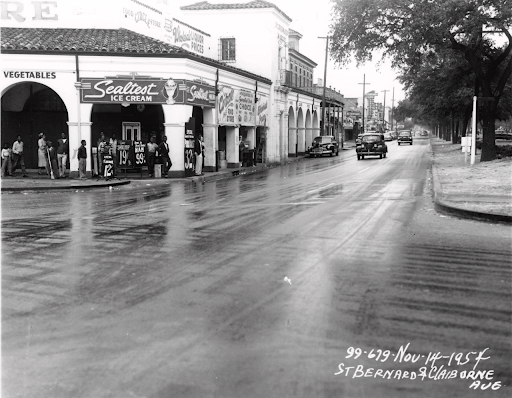
Claiborne’s future
Yet there are murmurs within the community that removal or renewal may not be the best option. During Katrina, the overpass was a necessary refuge from flooding. Some argue removal could accelerate gentrification, an issue Treme has dealt with for decades. Then there is the issue of the city actually building and maintaining new infrastructure, something New Orleans residents have grown weary of.
Still, some residents want complete removal of the overpass. Others say they would embrace any improvement.
“We’ll be thankful that we just get the ramps taken down,” Charbonnet said, which would decrease unnecessary traffic, remove cover for criminal activity and open opportunities for further projects.
Charbonnet and Stelly plan to continue their advocacy. Stelly and her organization recently received a $500,000 Environmental Protection Agency grant to collect health data under the overpass with the help of the LSU School of Public Health. Meanwhile, Sanders and Beaman continue to tell the story of Treme’s people. Sanders and his organization, The Claiborne Avenue Historical Project, plan to release a 90-minute documentary on the issue around 2025.
As the stalemate continues, the overpass seems to be getting worse. Needles are an increasingly common sight below, while many streetlights above remain broken. Estimated costs to maintain the expressway are upwards of $50 million.
“There’s a school right there,” Stelly said. “There are children who walk across Claiborne to get to that school, and they’ve had to walk to school with the coroner’s office right there carrying away a dead body.”
“They’ve had to pass prostitutes, male and female, in the morning going to school.”
But signs of defiance exist too.
There are murals painted on support columns. Some depict oak trees.
Others feature local artists trying to reclaim a semblance of cultural identity.
Despite everything, the surrounding community retains the traditions that have made it one of America’s most unique communities. Its jazz museums, brass bands and Creole restaurants will continue to attract hipsters and HBO cameras, while longtime residents work to preserve its original fabric.
Outside Charbonnet’s window, as the tires of over 130,000 cars a day desperately navigate the crumbling pavement, the heart of New Orleans keeps on pumping.



